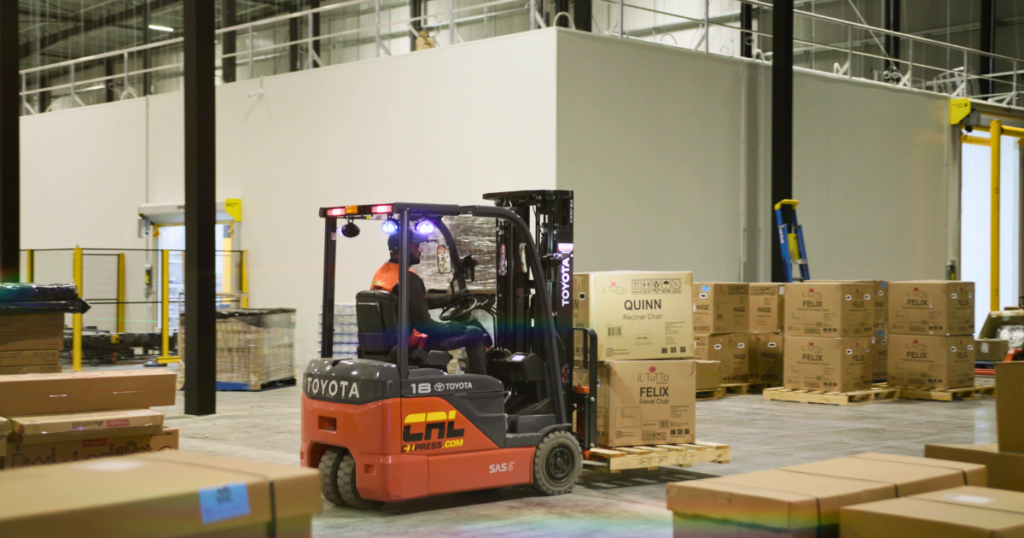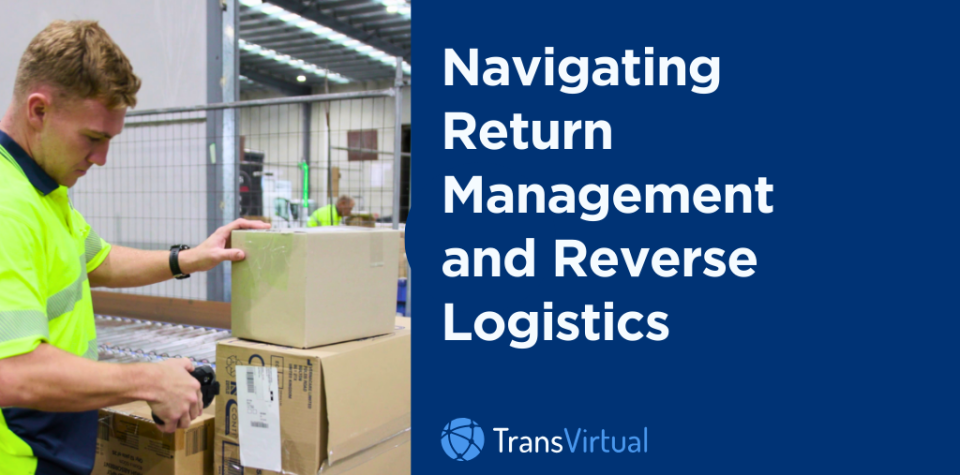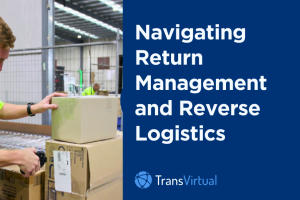In today’s dynamic online retail landscape, returns plays a crucial role in the supply chain process. But handling returned goods can be complex for businesses to effectively navigate.
But with the right logistics software in place, companies can streamline their returns and reverse logistics process and turn returns into a powerful tool for building customer loyalty.
In this article, we are going to take a look at managing returns and reverse logistics as well as how these strategies help you reduce costs.
Are Reverse Logistics and Returns Management the Same Thing?
Let’s tackle the elephant in the room: Are reverse logistics and return management the same? Well, they’re related concepts in the product life cycle but have their key differences.
An integral part of supply chain management, reverse logistics refers to the process of managing the movement of items back to their initial location for returns, repair, remanufacturing, or disposal.
Return management, on the other hand, is a subset of reverse logistics that’s specific to handling returned goods. It encompasses tasks like handling inquiries, providing refunds, and ensuring customer satisfaction.
The Challenges of Returns Management
Returns are an inevitable part of the retail experience, especially in the age of online purchases.
Customers are driven to return goods by product dissatisfaction, sizing issues, or shipping errors. For online retail businesses, processing returns presents several challenges, including inventory reconciliation, restocking, and processing refunds or exchanges promptly.
Without efficient systems in place, returns can become a bottleneck in the supply chain, leading to inventory inaccuracies, increased costs, and dissatisfied customers.
Collecting returned goods
In addition to retailers, logistics providers are an integral part of the return process.
Logistics providers are often called on to collect returned items from customers and deliver them back to the retailer. For this to operate efficiently, delivery drivers need to be able to access the logistics software systems that enable them to optimise routes to pick-up locations and manage the storage of these items if necessary.
Transportation costs and environmental impact
Unlike traditional forward logistics, the reverse logistics process works against the regular flow of your supply chain. This results in additional inventory costs, mileage, and fuel consumption. Moreover, reverse logistics contribute to your growing carbon footprint.
The Role of Logistics Systems in Reverse Logistics
Logistics systems are a comprehensive solution to effectively manage returns. Whether it’s a transport management system or warehouse management software, these platforms are equipped with features designed to automate and streamline various aspects of reverse logistics.
By integrating with warehouse management, order processing, and customer relationship management (CRM) systems, logistics software provides real-time visibility into return status and inventory levels. This enables businesses to make data-driven decisions and optimise their returns operations to ensure that goods being returned don’t interfere with warehousing and dispatch operations.
Key Features of Logistics Software for Returns and Reverse Logistics
For a robust logistics software system, effective reverse logistics (and returns process) is second nature. It’s essentially just the delivery supply chain operating backwards. But there are some key circumstances in the returns process that need to be managed properly to keep track of returned goods and to ensure that they don’t confuse or clutter up the flow of outward goods.
After all, it is the outgoing goods that represent profits for online retailers. So, they don’t want the flow of these items to be impeded by returning goods.
Return Authorisation
Logistics software lets you create automated workflows for initiating and approving return requests. This reduces manual intervention and processing time. It also provides an efficient and seamless process for the customer, ensuring repeat business and an overall smooth customer experience.
Product Inspection
Let’s be honest, you or someone you know has probably worn a piece of clothing and decided to return it. Oftentimes, managing returns entail product inspection to ensure they aren’t damaged before going through the entire process.
Barcode scanning and image recognition technology make it much simpler to inspect returned items, identify damage or defects, and determine where the item should be sent next.
Disposition Management
This is an interesting part of the returns process. It is crucial for optimising inventory levels, to reduce waste, recovering value from returned items, and maintaining customer satisfaction through efficient replacement or refunding.
Disposition management is the process of managing and handling the final destination or outcome of goods or products within the supply chain. It involves making decisions and taking actions related to the disposal, sale, return, or reuse of goods that have reached the end of their useful life cycle or are no longer needed by the company.
For returned goods, disposition management can fall into several categories.
1. Disposal. This involves developing strategies for disposing goods that are no longer usable or saleable. It may include recycling, donating, selling as scrap, or environmentally friendly disposal methods. For example, companies can partner with nonprofits to organize eco-friendly fundraisers, where returned or excess items are repurposed or sold to support charitable causes while reducing waste.
2. Remarketing. Finding new markets or opportunities to sell excess or returned goods. This may involve selling through discount channels, liquidation auctions, or secondary markets.
3. Inventory Management. It ensures accurate tracking and control of inventory levels, including surplus or obsolete stock that may require disposition.
4. Compliance. Ensuring that all disposition activities comply with legal, environmental, and regulatory requirements.
Logistics software often includes features and modules specifically designed to support disposition management activities, such as returns processing, inventory tracking (and preventing excess inventory), and disposal management. Rule-based decision-making algorithms embedded in the software ensure the efficient flow of goods based on a predefined criteria.
Restocking and Inventory Reconciliation

Logistics software can seamlessly integrate with inventory management systems for updating stock levels, allocating returned items to appropriate locations, and ensuring accurate inventory records.
Processing refunds
Automated software-based refund processing workflows, including payment reversal and credit issuance, expedite the refund process and enhance customer satisfaction.
Analytics and Reporting
Logistics software can provide advanced reporting and analytics capabilities for tracking return trends, delivery failure, identifying root causes of returns, and optimising processes to minimise future returns.
Benefits of a Reverse Logistics System
Implementing logistics software systems for returns management offers several benefits to businesses.
1. Improved customer experience
Faster processing times, transparent communication, and hassle-free returns contribute to enhanced customer satisfaction and loyalty.
2. Cost Savings
Automating and optimising returns processes will reduce the associated costs from manual handling, processing errors, and inventory write-offs.
3. Increased Efficiency
Streamlined workflows and real-time visibility enable faster decision-making, reducing cycle times and improving overall operational efficiency.
4. Data-driven Insights
Logistics software contains advanced analytics and reporting tools that can provide valuable insights into return trends, customer behaviour, and product performance. This enables businesses to make informed decisions about their returns processes and drive continuous improvement.
Optimise Returns Management Process and Reverse Logistics Processes Today
In an ideal world, your customers would never want to return your products. But returns are an integral part of ecommerce companies and retail in general.
Effective returns management is an essential business strategy for driving customer loyalty, operational efficiency, and profit.
Logistics software offer a robust solution for streamlining the returns processes, providing businesses with the tools and capabilities needed to manage customer returns seamlessly.
If you’re looking for a solution that can transform your reverse logistics strategy and returns management process, talk to us. Tell us your key challenges and we’ll propose strategies so you can decide we’re the best-fit for your business.
Schedule a commitment-free call with our experts today.



